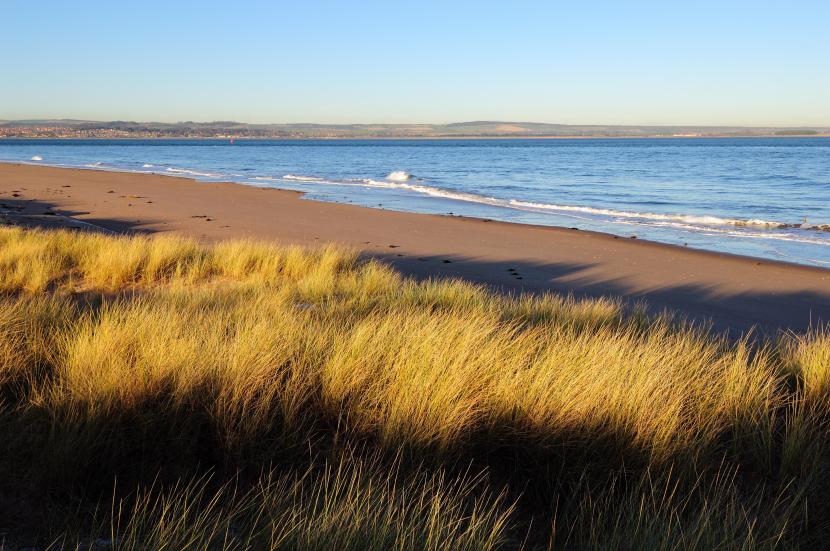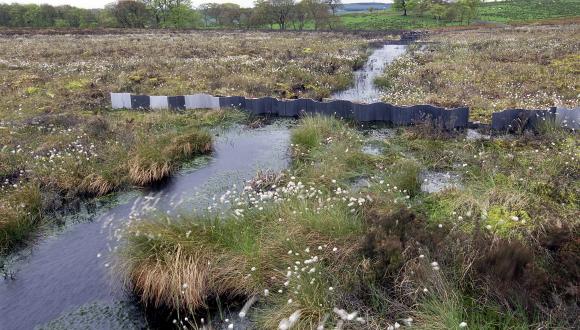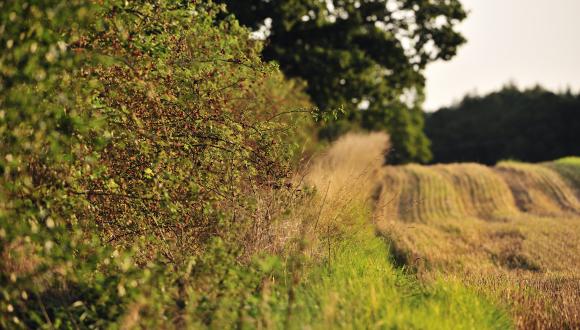Sand dunes
Scotland has the bulk of the UK’s sand dunes, and they back some of Europe’s most spectacular beaches.
Our dune systems are among Scotland’s most valuable habitats.
Scotland has more than 50,000 hectares of sand dunes – 71% of Great Britain’s coastal sand resource. The total sand dune area without machair would be about 38,300 hectares. Most machair systems are fronted by sand dunes.
Dune systems occur all around Scotland’s coast, but are less common on the mainland between Glasgow and Kyle of Lochalsh.

Marram grass growing on the sand dunes at Tentsmuir NNR. ©Lorne Gill/NatureScot
Sand dune zones
Starting at the beach, a dune system may have up to five distinct zones:
- Strandline – the dune system begins on the beach, on the strandline, where seaweed and other debris have provided a growing medium for specialist plants such as orache and sea rocket.
- Foredune – some distance above the strandline and before the mobile dune, there may be a band of foredune consisting of sand couch grass.
- Mobile dune – larger systems have great rolling ridges of mobile sand. Held in place by marram grass (or lyme grass), the sand shifts almost daily with changes in wind direction. Storm events can remove big sections in winter, but these usually return gradually in summer. Mobility is an essential element of dune systems and shouldn’t be confused with erosion.
- Fixed dune – further inland, the dune becomes more and more fixed by the vegetation. On acid dunes, where there’s little seashell in the sand, dune heath can develop. Some acid dune grasslands are called grey dune, and some of these are lichen-rich. The vegetation on more alkaline systems (not all of which are machair) is dune grassland.
- Dune slack – in these lower-lying areas between ridges, the vegetation usually requires more moisture. Some dune slacks flood often in winter, while others are permanently flooded.
This sequence, from beach to fixed dune, is often explained as the way that dunes advance: the ‘dune succession’. This can be true, and has happened on some systems recently, but in most cases the succession is long over. So the sequence should be thought of as zonation rather than succession.
Threats to sand dunes
Some 6,000 hectares of Scotland’s 50,000 hectares of sand dunes have been converted to conifer plantation. The best example of this is at Culbin, where a huge area of drifting sand was afforested.
Sea buckthorn has colonised significant areas of sand dune in parts of south-east Scotland. This non-native shrub was originally planted to combat erosion, but has itself become a problem.
Programmes are now in place to control sea buckthorn and other non-natives such as pirri-pirri burr (Acaena novae-zelandiae). When you visit sand dunes, make sure you don’t carry any burrs from site to site on your clothes or pets.







